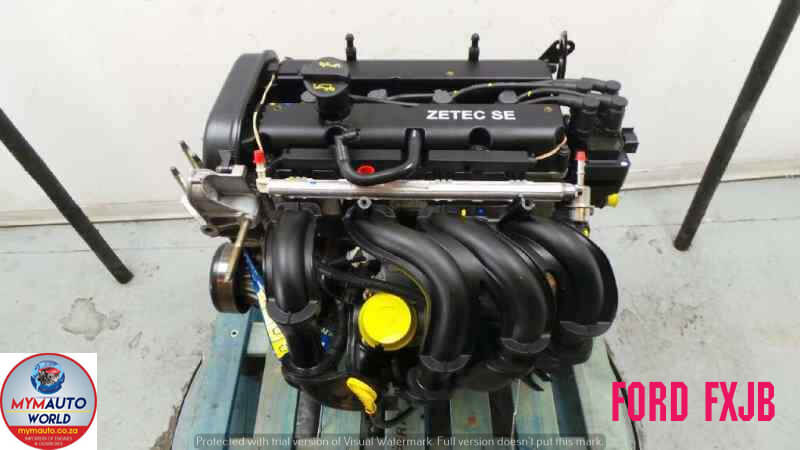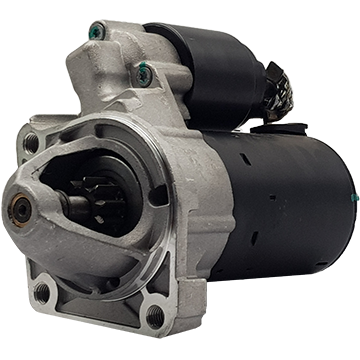Get the Most Out of Your Ford Fiesta Engine with Proper Care
Get the Most Out of Your Ford Fiesta Engine with Proper Care
Blog Article
The Future of Engines: Developments Driving Lasting Power Solutions
As the automobile sector browses the necessary shift towards sustainability, the future of engines is progressively defined by groundbreaking advancements. Electric engine improvements, together with encouraging advancements in hydrogen fuel cells and biofuels, are reshaping the landscape of power solutions. The introduction of hybrid systems further complicates this advancement, providing both challenges and chances to reduce discharges efficiently. Combined with the combination of synthetic intelligence in engine design, these technical strides elevate crucial inquiries concerning their long-lasting feasibility and influence on conventional standards. What might this mean for the sector and customers alike?
Electric Engine Advancement
The evolution of electrical engine developments signifies a pivotal shift in the aerospace and automotive sectors, driven by the immediate demand for sustainable choices to fossil fuels. This shift is defined by significant innovations in battery modern technology, power electronic devices, and electrical motor layout, which collectively boost the efficiency and efficiency of electrical engines.
Current technologies have actually caused the creation of lighter, extra energy-dense batteries, such as lithium-silicon and solid-state batteries, which promise longer arrays and shorter charging times. Furthermore, enhancements in electric motor effectiveness, such as making use of long-term magnets and progressed cooling down systems, enable electric engines to operate properly under differing conditions. These improvements not just improve lorry performance but additionally add to a decrease in general power consumption.
Additionally, the integration of advanced software application algorithms has optimized power management in electric lorries, enabling regenerative stopping and anticipating billing approaches. As producers increasingly accept electric propulsion, the aerospace and vehicle markets are witnessing a paradigm shift towards greener innovations. This development not only satisfies regulative demands but additionally straightens with customer preferences for environmentally friendly transportation services, strengthening electric engines as a keystone of future lasting movement.
Developments in Biofuels
As the aerospace and automobile markets significantly prioritize sustainable energy resources, improvements in biofuels become a complementary service to electric engines. Biofuels, stemmed from natural materials such as plants, waste, and algae, offer an ingenious avenue for lowering greenhouse gas discharges and dependence on nonrenewable fuel sources.
Current study has concentrated on boosting the performance and sustainability of biofuel production. Second-generation biofuels utilize non-food feedstocks, lessening competitors with food supply and decreasing environmental effect. Improvements in artificial biology have actually allowed the design of microbes to generate biofuels much more successfully, leading to higher returns and reduced production costs.
Furthermore, the advancement of drop-in biofuels enables smooth integration right into existing infrastructure, allowing a smoother shift for markets commonly based on nonrenewable fuel sources. ford fiesta engine. These fuels can be used in current engines without modifications, promoting their fostering across various industries
Investments in biofuel innovation, together with supportive plans, are important to drive innovation and scalability. As the worldwide neighborhood seeks to combat environment modification, biofuels provide a pragmatic, immediate remedy that straightens with the overarching objective of sustainability in transportation and aviation.
Hydrogen Gas Cell Technology
A growing number of companies and scientists are exploring hydrogen gas cell technology as a sensible alternative to conventional power sources in transport and energy systems. This technology transforms chemical power from hydrogen into electrical energy with an electrochemical reaction, with water as the only by-product, making it an eco-friendly option.
The core of hydrogen gas cells is the fuel cell pile, where hydrogen molecules are divided right into protons and electrons. The circulation of electrons creates electrical power, while protons move with a membrane to combine with oxygen from the air, forming water. This procedure causes high effectiveness and reduced discharges, placing hydrogen gas cells as a critical gamer in the transition to lasting energy.
Significant developments have actually been made in boosting the resilience and effectiveness of fuel cells, together with decreasing costs through cutting-edge manufacturing strategies. The growth of hydrogen production approaches, such as electrolysis powered by eco-friendly energy sources, enhances the sustainability of the general system. As facilities for hydrogen refueling expands and manufacturing techniques come to be much more effective, hydrogen gas cell technology holds excellent assurance for decarbonizing different fields, including sturdy transport and stationary power generation.
Crossbreed Solutions and Their Effect
Crossbreed systems represent a considerable evolution in lasting engine modern technology, merging traditional internal combustion engines with electric propulsion to optimize power effectiveness and minimize exhausts (ford fiesta engine). This double technique allows vehicles his response to utilize both source of power, enabling greater flexibility in energy usage and decreasing reliance on fossil fuels

In enhancement to environmental benefits, hybrid systems supply consumers a sensible transition in the direction of totally electric vehicles. They alleviate variety anxiety by combining the ease of gasoline with the benefits of electrical propulsion, making them an attractive option for a broader target market. As producers buy hybrid innovation, the growth of more innovative battery systems and lightweight products continues to enhance efficiency. Overall, hybrid systems represent an essential step in the direction of achieving sustainable transportation and addressing the immediate need for environmentally friendly power remedies.
The Duty of AI in Engine Style
Leveraging advanced formulas and machine discovering methods, the automobile market is progressively incorporating expert system (AI) right into engine design procedures. AI improves the efficiency and efficiency of design by evaluating large datasets to recognize ideal setups and efficiency criteria. This capacity permits engineers to imitate various operating conditions and predict engine behavior under multiple situations, considerably decreasing the moment and price Visit This Link connected with traditional prototyping approaches.
In addition, AI facilitates the growth of sophisticated products and burning processes customized for sustainability. By enhancing gas effectiveness and lessening discharges, AI-driven layouts straighten with worldwide efforts intended at reducing the carbon footprint of automotive engines. Maker learning algorithms can additionally forecast maintenance requirements, leading to enhanced integrity and durability of engine parts.
In Addition, AI is instrumental in the combination of electrification modern technologies, such as crossbreed systems, where it can optimize battery management and power healing processes. As the market moves in the direction of more lasting power services, the duty of AI in engine layout becomes progressively important, driving innovation and improving the performance of future engines. Ultimately, the partnership between AI and engine design declares a new age of smarter, cleaner, and more reliable automotive innovations.

Conclusion
In verdict, the future of engines is being shaped by a merging of ingenious technologies that focus on sustainability. Electric engine innovations, biofuel advancements, hydrogen fuel cells, and crossbreed systems collectively add to a substantial decrease in emissions and environmental influence.
Electric engine innovations, together with appealing growths in hydrogen gas cells and biofuels, are reshaping the landscape of power remedies. Additionally, improvements in electric motor effectiveness, such her response as the use of irreversible magnets and progressed cooling systems, make it possible for electric engines to run efficiently under varying problems. By maximizing fuel efficiency and lessening discharges, AI-driven styles align with worldwide initiatives aimed at decreasing the carbon impact of automobile engines. As the industry moves in the direction of even more lasting power remedies, the duty of AI in engine design comes to be increasingly vital, driving development and boosting the performance of future engines. Electric engine innovations, biofuel growths, hydrogen gas cells, and hybrid systems collectively contribute to a considerable decrease in exhausts and ecological effect.
Report this page